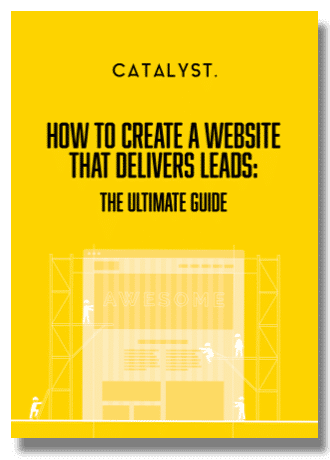SEO (search engine optimisation) – we’re all familiar with the concept by now. Do it right, and your website will sit atop the search engine mountain like a glacé cherry on a freshly iced cupcake.
Get it wrong and, well, nothing much will happen.
In order to help you along your way to SEO greatness, we’ve collected our bulletproof SEO content top tips into one place, providing you with all the knowledge you’ll need in order to create a high-quality SEO content strategy, one that helps you climb the search engine rankings and get the eyes on your website you’ve always deserved.
What is SEO content?
SEO content is crafted to be both attractive to search engines, while still being high quality and genuinely useful/entertaining for the reader. Search engines, such as Google, want to promote the best content to their users. By creating SEO-optimised, well-written content, you’ll find that you start to appear higher on search engine results pages (SERPs), attracting more organic traffic to your website.
However, it’s not all about throwing in some keywords and calling it a day. The writing, structure and overall presentation of your content needs to be spot on if you want to find yourself in that number one spot.
Your content should be:
- Valuable to the reader
- Enticing (make them want to learn more)
- Keyword balanced
Search engines will recognise the value you’re providing, designating you as an authority on the subject and boosting your position in SERPs.
A good SEO content strategy should include a wide range of content formats, including (but not limited to):
- Blogs
- Guides
- Infographics
- Videos
- Podcasts
- eBooks
- Quizzes and other interactive content, such as calculators, polls, etc.
While this all sounds great, why should you care?
Why should you create SEO content?
The predominant answer, as we have alluded to earlier, is relatively simple.
Websites that rank higher on search engines drive more traffic.
A more detailed answer is that SEO content brings your business:
- Increased visibility – By optimising your content for specific keywords and phrases, you can increase its visibility in SERPs.
- More traffic – Higher visibility leads to more traffic to your website, which can lead to increased engagement, conversions, and revenue.
- Improved user experience – SEO-focused content is designed to provide users with relevant and valuable information that answers their questions and meets their needs.
- Better conversion rates – By providing users with valuable information that meets their needs, you can increase the likelihood that they will convert into customers.
SEO content is one of the best ways for you to rank more competitively for the keywords that are most relevant to your business. Google and other search engines like fresh content to index. The fresher the content, the more likely it is to find its way onto a SERP.
The benefits don’t just stop there, though. A website that has lots of high-performing content will see an overall boost in SEO performance, as search engines start to recognise you for your work. Failing to create great SEO content essentially means that your website is dead in the water – nobody will find it.
Now that we know that we want to make a killer SEO content strategy, it’s time to run through how to create one.
How to create SEO content – A step-by-step guide
This process will vary from business to business, but here’s our recommended process for creating amazing SEO content plans:
1. Map out your target audience
Before you get started with any technical SEO magic, make sure you’re 100% on who your target audience is.
Chances are you’ve already got this nailed down, but if not, take the time to identify your ideal target’s:
- Job role
- Age
- Geographic location
- Sex
- Interests
This will help you target them properly and ensure you’re producing content that truly resonates with your audience.
2. Start with keyword research
Each piece of content should target a specific keyword/group of keywords.
Don’t try to make it too broad; search engines don’t like content that’s all over the place. For example, if you want to write a blog post about how to choose the best red shoes, your keywords might be ‘red shoes’, ‘choosing red shoes UK’ and ‘top red shoe features’.
Keeping things simple here is important. If you want to branch out and explore more around your chosen keyword, then do it in another piece of content! Keeping your content focused will help it perform better overall.
There are many ways you can carry out your keyword research. The easiest way is using a tool such as SEMrush, however, simply searching for terms, and seeing what comes up, is a perfectly acceptable (if a little slow and labour intensive) way of identifying keywords that are worth targeting.
3. Identify your current position
Do you currently rank at all for the keywords you’re looking to target?
If the answer is yes, then a little optimisation may be in order, rather than a full new content write (this will come later, don’t worry!).
Say you’re ranking in position 2 for a keyword. This is a great opportunity to perform some conversion rate optimisation. Make sure your keywords are prevalent, featuring in your page titles, headings and meta descriptions. This may well just give your page the boost it needs to jump up on the results pages.
If you don’t rank for your keyword, then it’s time to move onto the next step.
4. What’s the intent of your keywords?
People search with wildly different intents. Some people are looking to be educated, some are looking to purchase. Identify where in your decision-making journey your keywords fit, and adjust your content accordingly.
For example, if a keyword is more suited to top-of-the-funnel prospects, then producing educational videos and written content is a great way of building trust with your brand.
Is a keyword more suitable for those prospects that are more ready to buy? Then feature it in case studies or content that’s more heavily sales driven.
5. Create your titles & plan your formats
Now that we’ve got our keywords and we know how they should be used, it’s time to let the creative juices flow!
Get the team together and see how you could integrate your keywords into some content.
Titles that work best often include
- X ways to do Y
- How-to do X
- The guide to X
Generally speaking, search engines love numbered lists. Try to incorporate that into either your title or the greater content.
6. Write your content
When it comes to writing your content, you can either write it yourself, hire an experienced copywriter to produce any written work, or a talented video content team for your video content.
Generally speaking, when creating your content, the following pointers should always be adhered to:
- Place your keywords as high up in your content as possible
- Don’t keyword stuff (cramming the words in wherever you can). Just include them where is natural
- Create long-form content that comprehensively covers the topic (don’t give the reader any reason to search elsewhere for answers) – search engines like webpages that keep users on for a long time as this demonstrates that the information you’re providing is useful
- Keep it natural – talk in a tone that best suits your business, but try to keep things fresh and interesting (even if what you’re talking about is a little dry!)
- Video content should be concise, and written content shouldn’t overstay its welcome. Try to keep videos between 1-5 minutes (this will vary based on industry), and written content anywhere from 750-1500/2000 words. Anything more than that is way too long!
- Link to relevant, authoritative websites and include stats where possible
When writing your content, it’s essential to optimise for both on-page and off-page SEO.
On-page SEO:
This refers to the nitty-gritty backend of your website content.
On-page SEO optimisation includes:
- Keeping your URLs simple and descriptive
- Featuring metadescriptions (no more than 160 characters)
- Using keywords in headings and titles
- Use local keywords if you’re targeting geographically
- Using strong CTAs to drive desirable actions
Off-page SEO:
This is all about building your website’s authority (search engines allocate every website with an ‘authority score’, or ‘domain authority’. More authoritative websites will usually rank higher than less authoritative websites).
Links to your website’s content from other reputable websites will help improve your domain authority. As a result, we recommend creating a backlinking strategy as part of your ongoing SEO content strategy.
You can do this organically, by creating content that’s stat-rich and interesting. Other websites will naturally start to link to your content.
Or you can approach websites with backlinking opportunities, creating bespoke content for them in exchange for a link back to your site.
7. Get ready for publish (and get ready to schedule)
When getting ready to publish make sure you double check the following:
- Is your title keyword rich? Make sure your title is 70 or less characters so it displays properly – less is more!
- Have you featured your keywords in your metadata? Is your metadescription under 160 characters?
- Does your primary keyword feature in your H1 tag?
- Have you included internal links to other pages within your website? Doing this helps search engines to understand how this new content links to existing content, and crawl your website more easily
Got a big tick next to all of those? Then it’s time to hit the publish button!
8. Track & measure results
The work doesn’t stop there, though.
Schedule social media posts about your content, prepare emails to share it with your clients/prospects, and schedule the next piece of content to go out soon.
Over the next few weeks and months, monitor carefully how well your content is performing. It may well need optimising, that’s perfectly normal! Tinker with it until you start seeing results.
And there you have it!
Don’t worry, it might seem a little overwhelming, but take your time, enjoy writing the content and, eventually, it will become second nature to you.
Struggling to find time to create your SEO content strategy? Don’t worry about that, either – most businesses, especially SMEs, struggle to allocate time to SEO content. Instead, they choose to outsource it to content marketing specialists or to an SEO Agency
Fortunately for you, you’re in the right place! At Catalyst, we work with our clients to create high-quality content strategies designed to boost your rankings.
When you’re ready, book an appointment with one of our content specialists by clicking the link below. We’re here to map out a content strategy that works for your business’ unique needs.
Talk to content specialist


